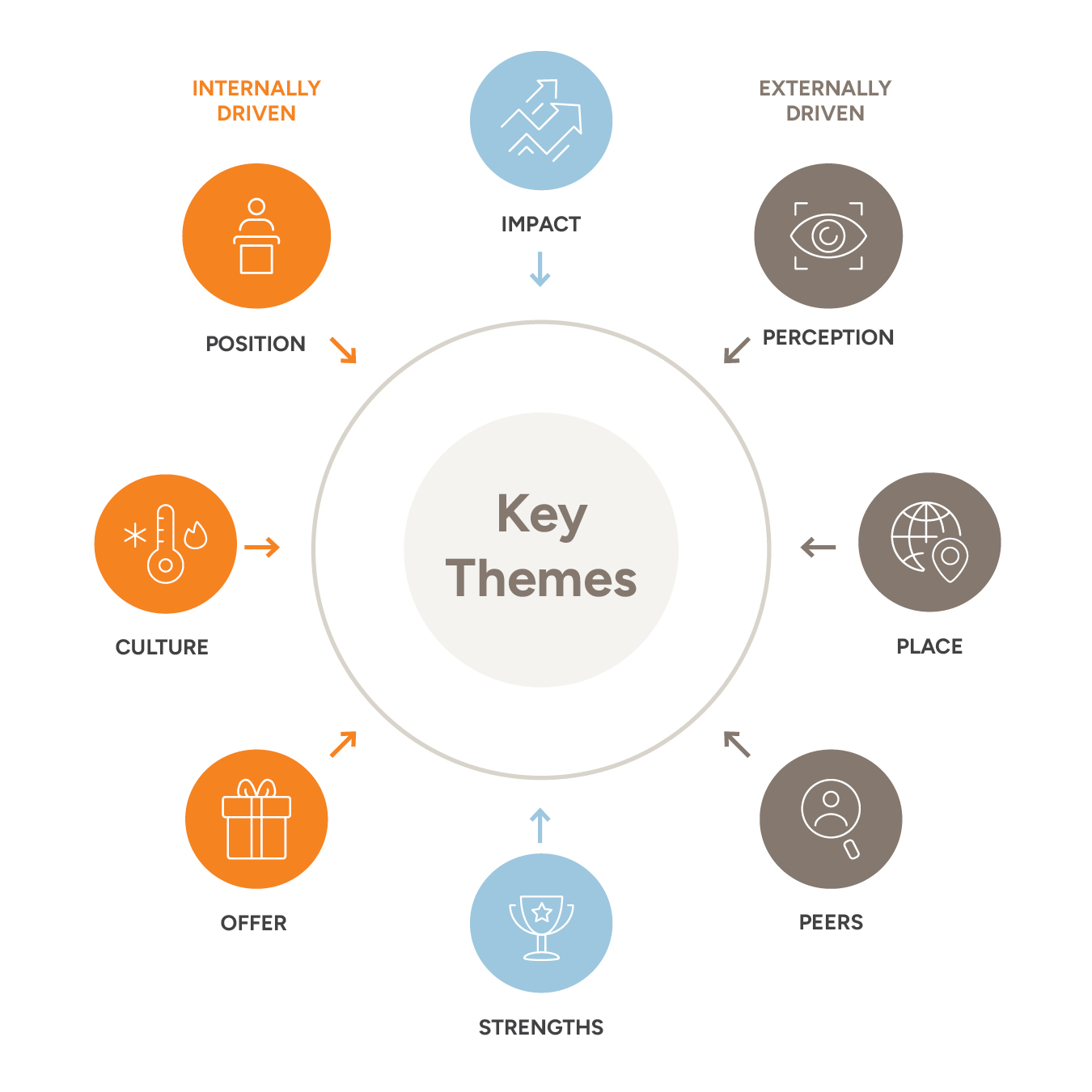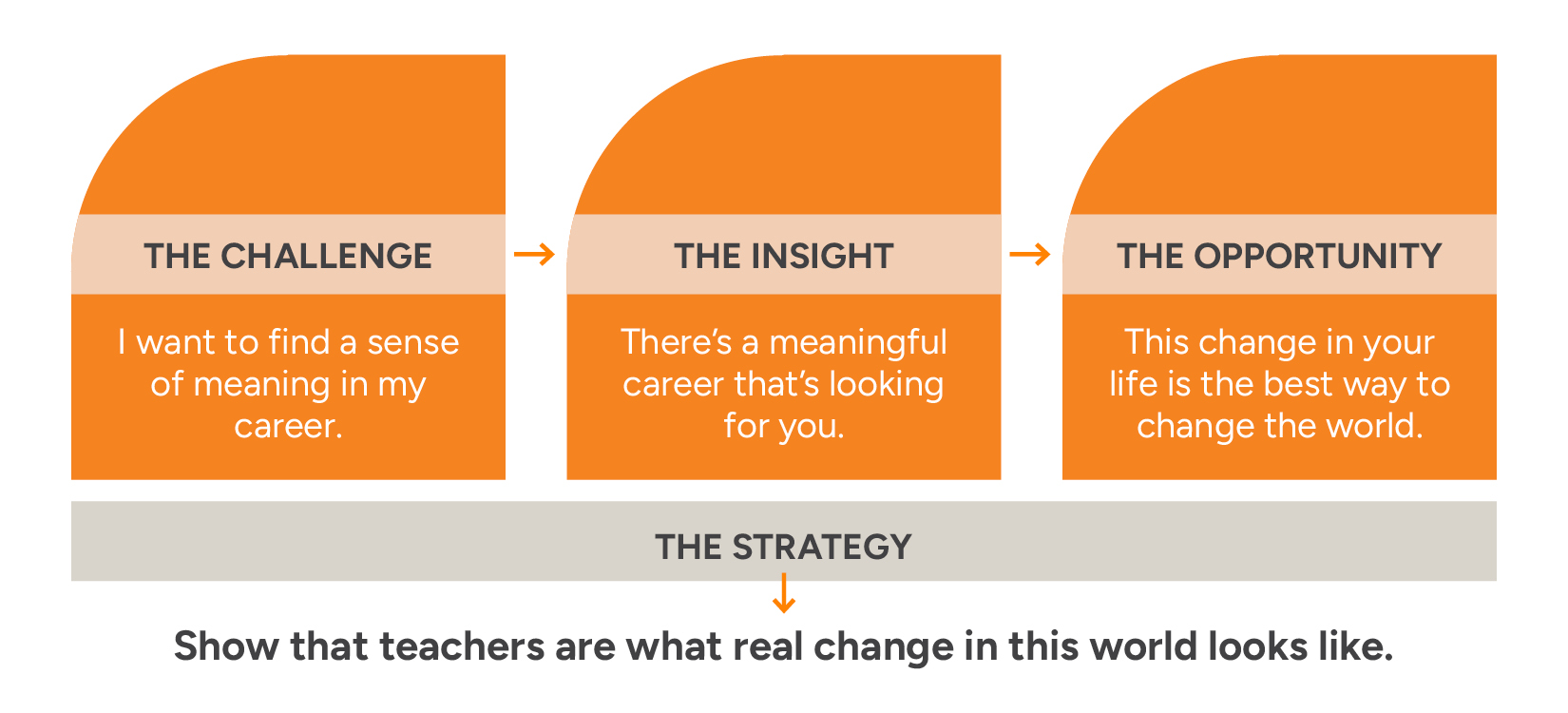Getting the research right: themes vs. insights
10/17/2023
When we’re crafting a strategy, we often turn to research to inform and inspire great work. But the type of information we need from that research is different, based on whether we’re working toward a brand strategy or a campaign strategy. As we conduct our research, the focus and the filters we use need to adjust. But how?
With an abundance of data and methodologies, how do you focus on the right kind of research, and more importantly, how do you know when you’ve found something worth attention?
For brand strategy, what you want are research themes, whereas with a campaign, it’s more powerful to isolate a few key insights and then select one to build the campaign around.
What’s the difference between themes and insights? Allow me to explain, because getting the research right makes your strategy stronger.
Themes are for brand strategies.
Themes are groups of findings, observations, and insights that relate to one another – commonalities and patterns found in the research. This is our focus as we’re developing a brand strategy. Themes are often broad and far reaching — better at describing communities of people than individual behaviors. When patterns come together in a way that helps us understand what’s really happening among a group of people, that’s a theme.
In uncovering themes, we can better understand a brand’s communities and the ways they move through culture and society — the attitudes, beliefs, circumstances, and patterns of behavior that hold the community together. Tapping into those community truths is how you write an effective brand strategy.
When we’re conducting research for a brand strategy, we need to consider several measures from diverse categories, like what’s shown below. Within these categories, we can identify themes, prioritize them, and then incorporate them into the strategy.

An example of a research theme for CULTURE might be: Midwestern values are misunderstood
With then multiple findings, observations, insights, and data points that feed into that theme, such as:
- There’s a geographical-based perception of what Midwestern values mean
- Many people think hard work and humility, while others think conservative and behind-the-times.
- 78% of survey respondents felt it was an outdated term
- Internationally, the term “Midwestern values” are unknown
- At their best, Midwestern values can be used as desired leadership traits
- There may be an opportunity to redefine Midwestern values as leadership values
Themes help brands embed themselves authentically within the communities they serve. In higher ed, our communities often include prospective students, current students, staff, faculty, alumni, donors, and others. With such broad and diverse groups of stakeholders, themes describe the everyday circumstances of each community and offer insight on how to be more relevant.
Insights are for campaign strategies.
Insights, on the other hand, are individual ideas that are precise, sharp, and keen—the key to a good campaign strategy. A well-crafted insight helps us understand individual mindsets and behaviors, so that we can affect them. An entire campaign can (and should) be on a single insight. However, a single insight is likely insufficient for building an enduring brand.
Insights bring absolute focus — making the strategy more effective at understanding an audience, informing a message, and offering a creative entry point. Unlike defining a brand, the purpose of a campaign is typically to drive action — changing a behavior or mindset to prompt a desired response.
I like the components below, derived from one of the leaders on sharp insights, Mark Pollard. He calls it “the four points”. See below.
- Challenge: A human-problem that can be solved.
- Insight: Sharply crafted idea, drawn from the data, that reveals a need, mindset or behavior.
- Opportunity: A way to solve the challenge, shifting the mindset or behavior.
- Strategy: A concise statement about what exactly what the strategy will do.
Here’s an example of this in action:
The ask: Sell a teaching certification program to someone in a non-teaching career, who’s dissatisfied with their current career outlook.

Choosing the right approach.
It can be challenging to work through all the focus group notes, enrollment data, alumni giving behaviors, and the student survey results and come away with something useful for a strategy.
Step one is knowing what you’re trying to achieve—what’s the goal?
Step two is organizing your research findings by themes or insights. Do you need a broad field of view or razor-sharp intel?
What may seem counterintuitive here is that it doesn’t take a lot of information to write a compelling strategy. But it does require the wisdom and creativity to take unassuming data points and turn them into something exciting. It’s what makes strategy both an art and science.




